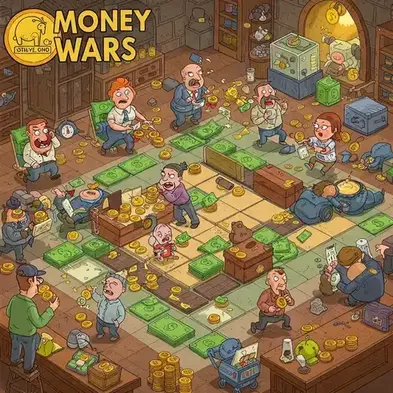🌎 Introduction: A Trade War or a Tactical Move?
When Donald Trump took office, he didn’t just bring a new political approach—he brought a new economic battlefield. His tariff policies, often referred to as part of a “trade war,” were designed to reduce the U.S. trade deficit, protect American industries, and push global competitors (especially China) into fairer trade practices. But did these tariffs serve their purpose, or did they backfire? Let’s dive into the real impact of Trump’s tariffs, explore surprising facts, and even sprinkle in a little humor where appropriate.

💼 The Strategy: Why Did Trump Impose Tariffs?
🏛️ Key Goals:
- Protect American Jobs – By taxing imported goods, the goal was to make American-made products more competitive.
- Reduce the Trade Deficit – Trump aimed to cut the massive trade gap, especially with China.
- Punish Unfair Trade Practices – The administration accused China of intellectual property theft and unfair subsidies.
- Boost Domestic Manufacturing – Higher tariffs on steel and aluminum were meant to revive U.S. industries.
- National Security Concerns – Some tariffs were justified under national security reasons, particularly those on steel and aluminum.
🔎 The Execution:
Trump’s administration imposed tariffs on hundreds of billions of dollars’ worth of imports. The most notable ones were:
- Steel & Aluminum Tariffs (2018): 25% on steel and 10% on aluminum, affecting imports from China, Canada, and the EU.
- China Tariffs (2018-2019): Multiple rounds of tariffs on Chinese goods totaling over $360 billion.
- Retaliation: China, Canada, the EU, and others responded with their own tariffs on U.S. exports.
- Automobile Tariffs (Considered but Not Implemented): Trump threatened tariffs on European and Japanese cars, but negotiations prevented their enforcement.
- Mexico & Canada Tariff Threats: Trump briefly imposed tariffs on Mexican goods, pushing for tougher immigration enforcement.
🎮 The Trade War: Who Won and Who Lost?
🌐 Winners:
✅ Some U.S. Steel & Aluminum Companies – Short-term gains were seen due to reduced foreign competition. ✅ Government Revenue – Tariffs brought billions into the U.S. Treasury. ✅ Countries Avoiding Tariffs – Some nations negotiated exemptions or found alternative trade routes. ✅ Vietnam & Other Asian Countries – As tariffs on China increased, companies moved production to Vietnam, India, and Malaysia. ✅ Lobbyists & Legal Experts – Companies sought exemptions, boosting demand for trade lawyers and consultants.
💡 Losers:
❌ American Consumers – Higher tariffs meant increased prices on everything from cars to washing machines. ❌ Farmers – China retaliated with tariffs on U.S. agricultural products, hitting soybean and pork exports hard. ❌ Retailers & Small Businesses – Higher import costs affected businesses relying on foreign goods. ❌ Harley-Davidson & Other Export-Driven Companies – EU tariffs on American goods made exports more expensive. ❌ Tech Industry – Many U.S. tech companies depended on Chinese manufacturing and faced higher costs.

📊 The Economic Impact: By the Numbers
| Factor | Before Tariffs | After Tariffs |
|---|---|---|
| U.S. Trade Deficit (China) | $375 billion (2017) | $310 billion (2020) |
| Steel Prices | Stable | +20% Increase |
| U.S. Soybean Exports to China | $12 billion (2017) | $3 billion (2018) |
| Inflation Rate | 2.1% (2017) | 2.8% (2019) |
| Cost to U.S. Households | N/A | Estimated $1,300 per year (2019) |
| Jobs Lost in U.S. Manufacturing | N/A | 300,000 (by 2020) |
🔍 Key Takeaway: While the trade deficit with China shrank, the overall U.S. trade deficit didn’t significantly improve because imports shifted to other countries. Meanwhile, American businesses and consumers absorbed the extra costs.
🎱 Unexpected Twists: The Side Effects of Tariffs
- Tariffs on China? More Like Tariffs on America – Most of the extra costs were passed down to U.S. consumers and businesses, not to China itself.
- China Played the Long Game – China sought alternative markets and ramped up domestic production, reducing its reliance on U.S. goods.
- Lobbyists Had a Field Day – Many industries scrambled to get exemptions, leading to political maneuvering.
- Stock Market Rollercoaster – Every new tariff announcement sent Wall Street into swings of uncertainty.
- Apple & Tech Giants Were Caught in the Middle – Apple and other tech firms lobbied against tariffs due to reliance on Chinese manufacturing.
- Trade Deal Came Too Late for Some – The 2020 Phase One trade deal helped some sectors but didn’t resolve structural trade disputes.

🌍 The Global Picture: How the World Reacted
- EU & Canada – Hit back with tariffs on American whiskey, motorcycles, and more.
- China – Imposed tariffs on U.S. agricultural products, tech, and autos.
- Japan & South Korea – Sought diplomatic solutions and adjusted supply chains.
- Mexico – Negotiated exemptions but prepared countermeasures.
- Russia & Brazil – Stepped in to supply China with agricultural products that were previously imported from the U.S.
- Australia & Southeast Asia – Benefited from increased trade with China as U.S. ties weakened.
🤔 What’s Next? Tariffs Under Biden
When Joe Biden took office, many expected an immediate rollback of Trump’s tariffs. However, he kept most of them in place while adopting a more diplomatic approach. Some key developments:
- Tariffs on China Remain – Biden continues leveraging them as a negotiation tool.
- Allied Cooperation – Unlike Trump’s unilateral approach, Biden has worked with allies to counter China.
- Supply Chain Shifts – Businesses are looking beyond China for manufacturing, diversifying to Vietnam, India, and Mexico.
- Potential Trade Agreement Reforms – Biden is exploring trade policy adjustments while keeping pressure on China.
🔥 Conclusion: Trade Wars – Worth It or Not?
So, were Trump’s tariffs a success? The answer depends on perspective:
- If the goal was to pressure China and protect American industries, there were some short-term gains.
- If the goal was to lower costs and benefit American consumers, tariffs largely backfired.
One thing is clear: The effects of Trump’s tariffs will be debated for years, and trade policies will continue to shape global economics.
💼 Your Thoughts? Did Trump’s tariffs help or hurt? Let’s discuss in the comments!
The Art of the (Trade) War
When Donald Trump assumed office in 2017, he brought with him a radical shift in trade policies, aimed at reducing the U.S. trade deficit and reasserting economic dominance. The phrase “America First” became synonymous with a series of aggressive trade measures that disrupted global markets. But were these trade wars a strategic win or an economic miscalculation? Let’s dive into the causes, effects, and lasting impact of Trump’s tariff policies.
The Spark: Why Did Trump Initiate Trade Wars?
Trump’s trade wars were largely fueled by:
- Concerns over Trade Deficit 💰: The U.S. had a massive trade deficit, particularly with China, and Trump saw tariffs as a way to correct this imbalance.
- Intellectual Property Theft 🤖: Allegations of China stealing American intellectual property led to demands for stricter regulations.
- Job Protection 👔: Trump aimed to bring back manufacturing jobs by imposing tariffs on foreign goods, making American products more competitive.
The Major Battles: Key Trade Conflicts
| Country/Region | Key Tariffs & Measures | Consequences |
|---|---|---|
| China | 25% tariff on $250B worth of goods 🇨🇳 | Retaliatory reciprocal tariffs on American exports, decline in trade relations |
| European Union | Tariffs on steel and aluminum 🏗️ | Countermeasures on U.S. products like bourbon, motorcycles, and jeans |
| Canada & Mexico | USMCA replaced NAFTA 🇺🇸 | Strengthened North American trade but caused short-term tensions |
| India | Tariff hikes on agricultural products 🥑 | Increased cost of American exports to India |
Economic and Political Fallout
1. Domestic Economy: Win or Loss?
- Short-term Gains: Some industries, such as domestic steel, benefited from reduced competition.
- Job Market Effects: While some jobs were protected, others suffered due to higher material costs.
- Consumer Prices: Increased tariffs meant higher prices for imported goods, affecting everyday Americans.
2. Global Trade Shifts
- China’s Countermoves: China sought alternative markets, reducing its reliance on U.S. imports.
- New Alliances: Countries formed stronger trade agreements to bypass U.S. influence.
- Supply Chain Disruptions: Businesses struggled with increased costs and shifting trade routes.
Trump Tariff Announcements: Key Dates & Events
- Trump Tariff Announcement 📢: Various tariffs were introduced throughout his presidency, causing volatility in global markets.
- Tariffs April 2 🔥: A key date when additional tariffs were discussed, shaking financial markets.
- When is Trump Announcing Tariffs?: Many speculated on what time Trump would make new tariff announcements, causing a surge in market speculation.
- Trump Tariff News 📰: Regular updates from CNN News and AP News covered every policy shift.
Liberation Day & Trump’s Perspective
- What is Liberation Day?: Historically, liberation days mark the end of oppression. Some critics jokingly referred to the lifting of tariffs as a potential “Trump Liberation Day.”
- Trump Liberation Day?: Supporters claimed his policies were liberating American industries from unfair trade practices.
The Verdict: Success or Failure?
While Trump positioned himself as a tough negotiator, the results of his trade wars remain mixed. Some industries gained temporary advantages, but the global market shifted in ways that weakened long-term U.S. influence. By the time Joe Biden took office, many policies were reconsidered to stabilize international trade.

